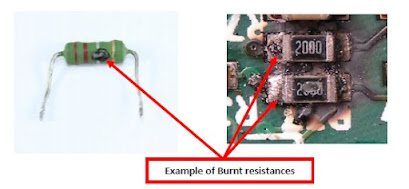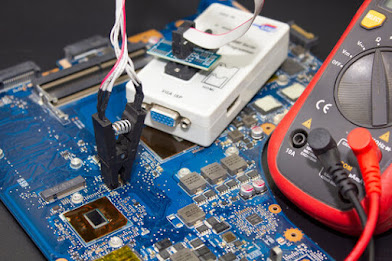What is ROM (Read Only Memory)? Types and Examples of ROM
ROM Definition!
ROM means “Read Only Memory”. This memory is able to store data in permanently means, and it is non-volatile memory that means its data never destroy when power get turn off. It is programmable chip because in which stored all instructions that are most required when to start computer. This process is known as “Bootstrap”.
Block Diagram of ROM
In this diagram, ROM contains “n” input lines and “m” output lines. When, every bit gets to combine of all input variable then it is called the “Address”. But, if every bit gets the combination which produces output lines, then it is known as “Word”.
Number of bits per word = Number of output lines, m
Read Only Memory Tutorial Headlines:
In this section, we will show you all headlines about this entire article; you can check them as your choice; below shown all:
- ROM Definition!
- Why to Need ROM in Computer
- Types of ROM
- Examples of ROM
Why to Need ROM in Computer
ROM is very useful device for automation system because it is capable to store data as per the need of system, and after inserting data, user can not delete or modify. So, we can say that it is permanent as well as protective data storage component. Due to this nature, ROM is not only used for Computer system. Rom chips are used also other electronics items such as washing machine, microwave and more.
If, any mistake is done during the manufacture process of ROM, then ROM can get unusable. It is very expensive stage of ROM manufacture, so it is creating the template. If a template is readily available, duplicating the ROM chip is very easy and affordable.
Types of ROM
There are different types of ROM, and here we will explain each one –
MROM
MROM stands for “Masked Read Only Memory“, and it is very first ROM was hard-wire devices. Masked ROMs consist pre-planned program of data otherwise instructions and it is cheaper as well.
These types of chips have a software mask which is burned on the chip, when it is designed cycle of semiconductor manufacturing process.
Applications of Mask Read Only Memory
- Server Operating Systems (SOS)
- Holding fonts for laser printers
- Holding sound data in electronic musical instruments
PROM
PROM stands for “Programmable Read Only Memory“. On this PROM, data can be written only one time, and it remains there forever. PROM is capable to retain their needed data when Computer is getting turn off. User purchases a empty PROM, and inserts the needed data with help of PROM program.
To need the well trained PROM programmer for writing data on this chip. When programmer writes programs on the PROM, then this process is known as “Burning PROM”. After burning data, you can’t make any modification in the burnt content.
Applications of Programmable Read Only Memory
- Radio-Frequency Identification
- Video game consoles
- Mobile Phones
EPROM
EPROM stands for “Erasable and Programmable Read Only Memory”, and in which stored data can be deleted by using of ultra-violet light for some time frame up to 40 minutes. The ultraviolet light clears its data, and now you can to reprogram the memory. To write to and erase an EPROM, you require a special device called a PROM programmer or PROM burner.
Applications of Erasable Programmable Read Only Memory
- Well programmed chip in the micro controller, modem, video card and other electronic gadgets.
- Debugging
- For writing program
- BIOS chip in the computer
EEPROM
EEPROM stands for “Electrically Erasable and Programmable Read Only Memory“, and In EEPROM, all activities such as programming and erasing are performed by electrically. This EEPROM is able to reprogrammed and erased in more than ten thousand time. Entire chip cannot be erased one time, only erase one byte at once.
Applications of Electrically Erasable Programmable Read Only Memory
- BIOS chip in Computer
- As storage for re-programmable calibration information in test-equipment
- As storage for in-built self learning functionality in remote operated transmitters
Example of ROM
There are some real life examples of ROM, below explain each one –
- Due to its permanent data storage nature, ROM is used in different types of embedded system because in embedded system, does not require changing data.
- ROM is also used into some electronics devices like feature phones like Nokia 3310, small Handy Games, VCR, DVD, Digital Watches, and more.
- ROM can be used into home appliances such as TV, microwave, refrigerator, washing machine, and more.
- It can be used into automobile, where to need data always, so that data is saved into chip.
- It is used into other devices such as calculator, printer, plotter, FAX machine etc.
- ROM is also used into automation toys such as singing fish toy. In this toy, to store preplanned program when you push its buttons then to generate music.
likely Asked Questions
Who invented ROM?
ROM (Random Access Memory) is invented by Robert Dennard.
What is the ROM in computer explain?
ROM is computer storage device as non-volatile nature that means it is able to store data for permanently; it can be read but not writable. ROM has a program that lets your computer get to start up, when it is turned on.
Why ROM is used in computer?
ROM is used to keep store the basic bootstrapping firmware for the your computer’s processor, and several firmware required to internally control self-contained devices like as optical disc drives, hard disk drives, graphic cards, and more.
How is data stored in ROM?
ROM is a kind of storage device that allows to keep store data as permanently on your computer as well as other electronic devices. It consists a program that is needed to get start up your PC that is more essential for boot-up; as well as it is able to execute many input/output tasks.
Is ROM is a volatile memory?
No! ROM is non-volatile nature memory that means its data will remain unchanged whenever turned off power supply.
What is ROM and its types?
ROM is computer storage medium as non-volatile nature that means it is able to store data for permanently; it can be read but not writable. ROM has five variants like as MROM, PROM, EPROM, EEPROM, and flash memory.
What is ROM capacity?
ROM chip is able to keep store many MB of data, usually 4 to 8 MB per chip.
What is ROM in medical terms?
ROM is stands for “Range of Motion” in medical term that is measurement of amount of movement around a certain joint or body part.
What is ROM and its examples?
ROM is storage medium to store data in permanently means, and it is non-volatile memory that means its data never destroy when power get turn off. The basic example of ROM is the cartridge that is used with video game consoles; it lets one system to run many games.
What are 10 examples of a ROM device?
- TV Remote
- DVD Player
- Smart watches
- Mobile Phone
- Television
- Washing Machine
- Microwave
- Computer BIOS
- Cartridge
- Firmware
What are different 5 types of ROM in computer?
ROM is classified into five types like as MROM, PROM, EPROM, EEPROM, and flash memory; above in this post, explained each one in detail; you can read them.








Comments
Post a Comment